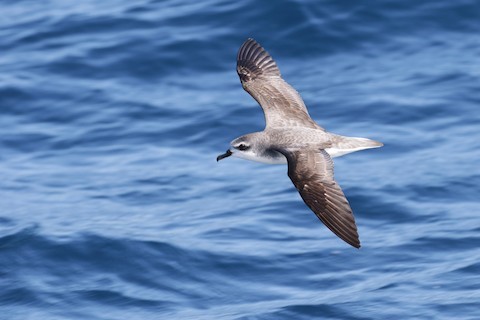Birdfinding.info ⇒ Common in the breeding season, September to April, around the Hauraki Gulf of New Zealand, when it can be seen in large numbers offshore and sometimes also from land north of Auckland. During this period it is often seen on pelagic trips from ports elsewhere around New Zealand and eastern Australia, such as the ones out of Southport, Kiama, Sydney, and Eaglehawk Neck, Tasmania. Uncommon in Hawaiian waters, mostly June to November, when it can be seen on pelagic trips out of Honolulu and west of Kauai in the Kaulakahi Channel, and sometimes from shore at Pololu. Also common from April to October in offshore waters along the Pacific Coast of California and Baja California, and uncommon north to Oregon, mostly beyond the continental shelf break over seamounts.
Cook’s Petrel
Pterodroma cookii
Breeds in New Zealand and disperses widely across tropical and subtropical waters of the Pacific Ocean.
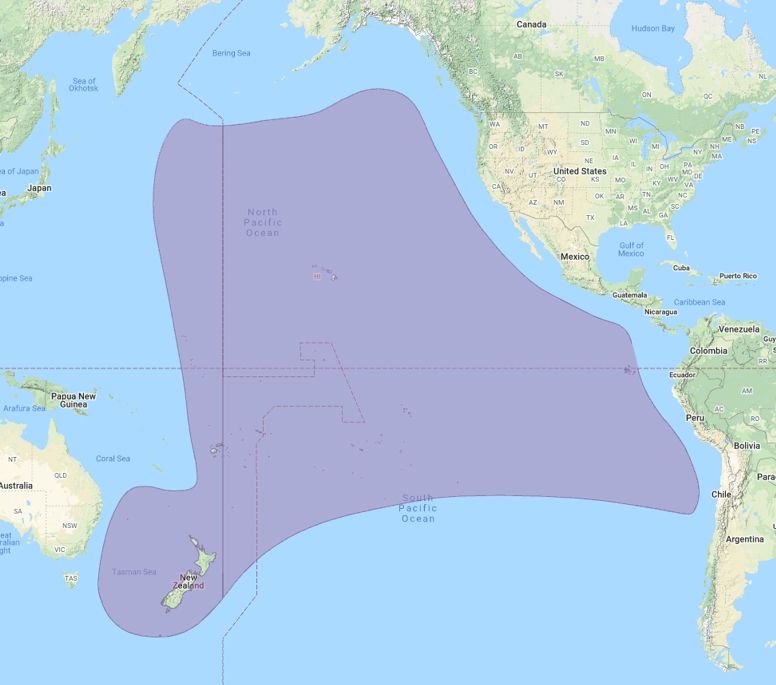
Approximate at-sea distribution of Cook’s Petrel. © Xeno-Canto 2021
Breeding. Breeds colonially from September to April, nesting in burrows on islands at opposite ends of New Zealand. The vast majority of the world’s population (approximately 300,000 pairs) nests on Little Barrier Island, northeast of North Island, across the Hauraki Gulf, plus a few pairs on neighboring Great Barrier Island.
At the southern end of New Zealand, approximately 5,000 pairs nest on Codfish Island west of Stewart Island. The southern population is recovering from near-extirpation, having dwindled to approximately 50 pairs in the 1980s.
Formerly nested on mountains in the interiors of both North and South Island, but it was extirpated from these areas by mammalian predators such as rats that accompanied the European colonists.
During the breeding season, forages widely across the Tasman Sea and adjacent southwestern Pacific.
Nonbreeding. From April to October, most of the population winters in deep offshore waters of the central and eastern North Pacific, mostly between Hawaii and the North American coast from Oregon to Baja California.
A much smaller portion of the population—perhaps mostly or exclusively the Codfish Island breeders—winters in the eastern South Pacific in the Humboldt Current off of Peru and Chile.
There is a single record from Canada: an individual found exhausted at Lillooet in the southwestern interior of British Columbia on December 4, 2007.
Identification
A small, thin gadfly petrel with gray upperparts and mostly white underparts.
The upperparts are mostly pale- to medium-gray overall and often show a pronounced “M” pattern with dark bars the full length of the wing connected by a dark bar on the lower back, and paler trailing edges on the secondaries.
The rump and base of the uppertail are mostly pale-gray, usually with a somewhat darker tip.
The head and neck are pale-gray like the back—with strongly contrasting blackish shadows around the eyes. The eye-shadows are further accentuated by white or whitish browlines that are usually sharply defined.

Cook’s Petrel. (Hauraki Gulf, New Zealand; November 15, 2018.) © Lars Petersson

Cook’s Petrel. (Hauraki Gulf, New Zealand; November 16, 2019.) © Alex Berryman
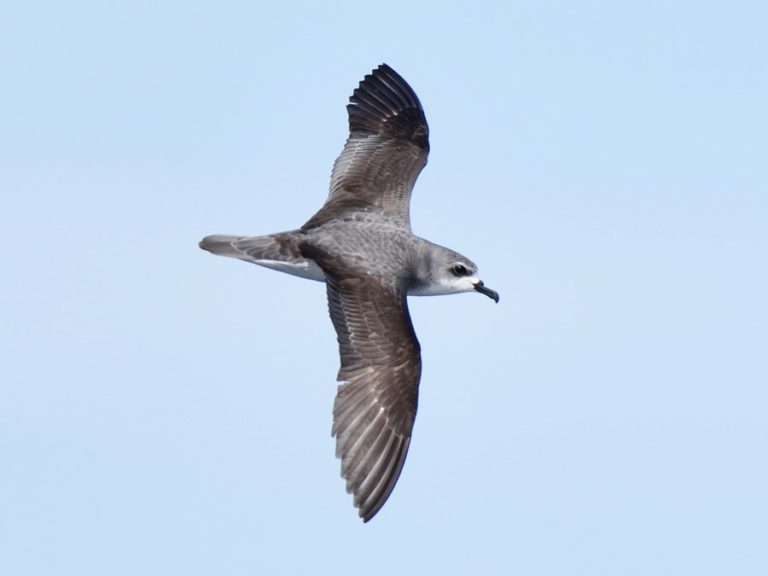
Cook’s Petrel. (Hauraki Gulf, New Zealand; January 14, 2017.) © Hiroyuki & Shoko Tanoi

Cook’s Petrel. (Britannia Seamount, offshore from New South Wales, Australia; October 5, 2019.) © Gus Daly

Cook’s Petrel. (Britannia Seamount, offshore from New South Wales, Australia; October 5, 2019.) © Gus Daly
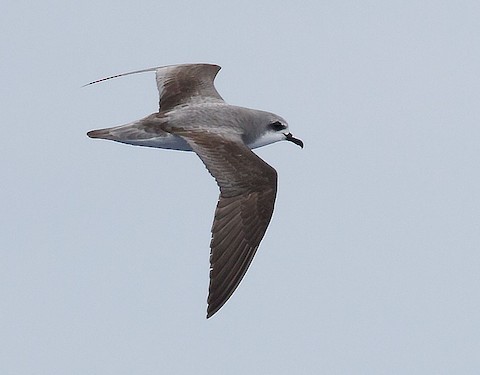
Cook’s Petrel. (Offshore from Southport, Queensland, Australia; December 20, 2015.) © Elliot Leach

Cook’s Petrel. (Britannia Seamount, offshore from New South Wales, Australia; October 5, 2019.) © Gus Daly
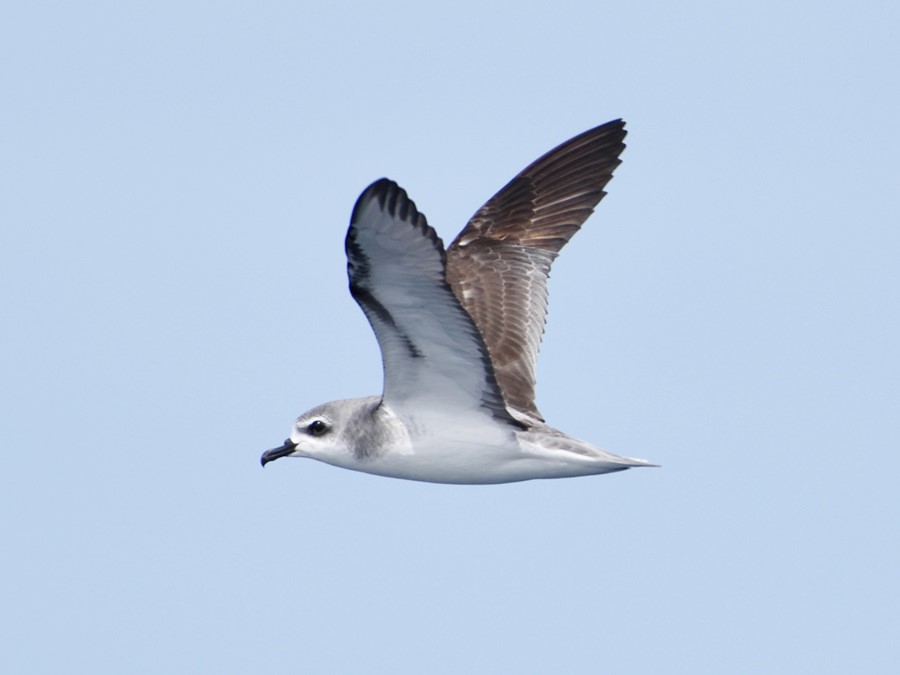
Cook’s Petrel. (Hauraki Gulf, New Zealand; January 14, 2017.) © Hiroyuki & Shoko Tanoi

Cook’s Petrel. (Offshore over escarpment between Rodriguez and San Juan Seamounts, California; July 25, 2009.) © Brian Sullivan

Cook’s Petrel. (Hauraki Gulf, New Zealand; January 14, 2017.) © Hiroyuki & Shoko Tanoi

Cook’s Petrel. (Offshore east of Stewart Island, New Zealand; January 4, 2019.) © Koel Ko
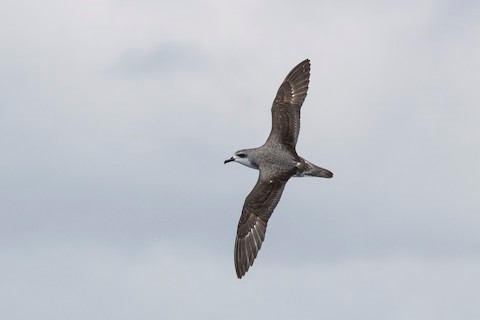
Cook’s Petrel. (Offshore from Tutukaka, North Island, New Zealand; February 25, 2018.) © Oscar Thomas
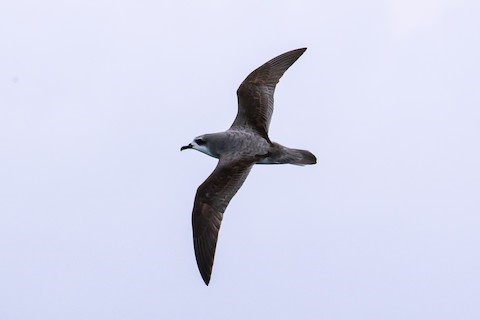
Cook’s Petrel. (Hauraki Gulf, New Zealand; November 25, 2016.) © graichen & recer
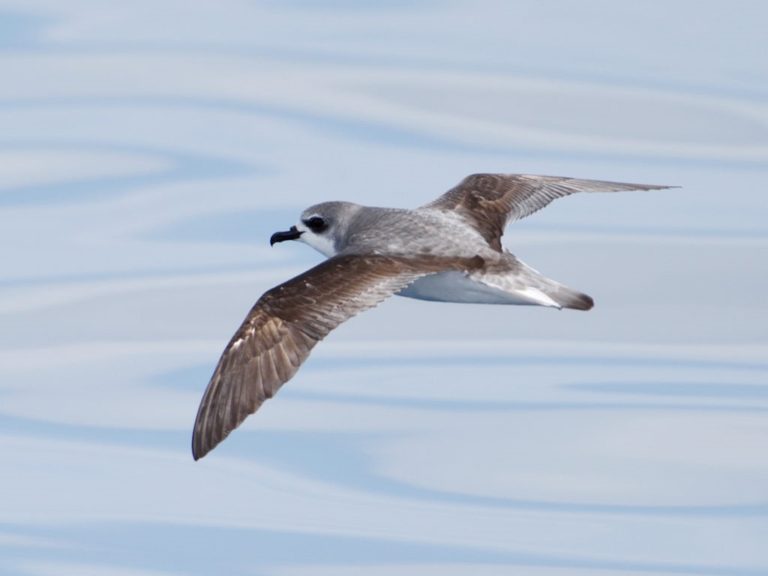
Cook’s Petrel. (Hauraki Gulf, New Zealand; January 14, 2017.) © Hiroyuki & Shoko Tanoi
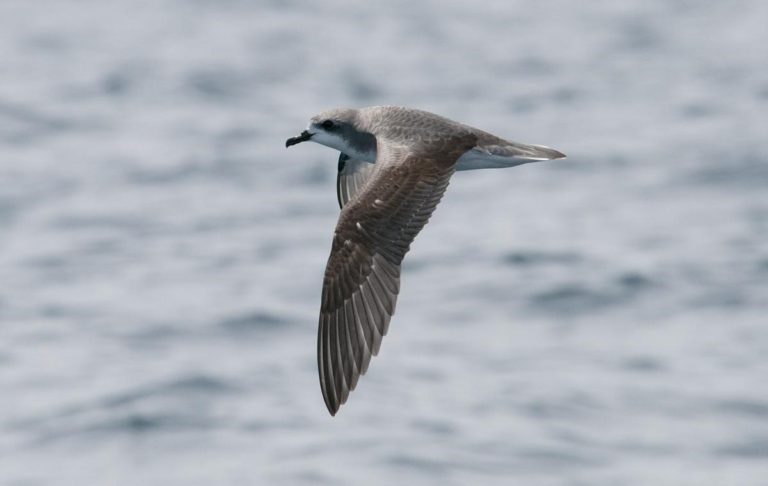
Cook’s Petrel. (Hauraki Gulf, New Zealand; January 2012.) © Philip Griffin

Cook’s Petrel. (Hauraki Gulf, New Zealand; January 14, 2017.) © Hiroyuki & Shoko Tanoi
The underparts are essentially all-white, with a variable pale-gray cowl that extends down the sides of the neck and variably farther back along the sides.
The underwings are white overall with a thin, often broken, blackish carpal bar and thin blackish leading and trailing edges.
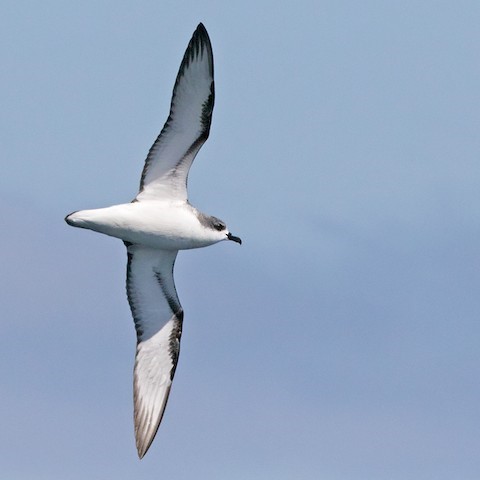
Cook’s Petrel. (Hauraki Gulf, New Zealand; November 15, 2018.) © Lars Petersson
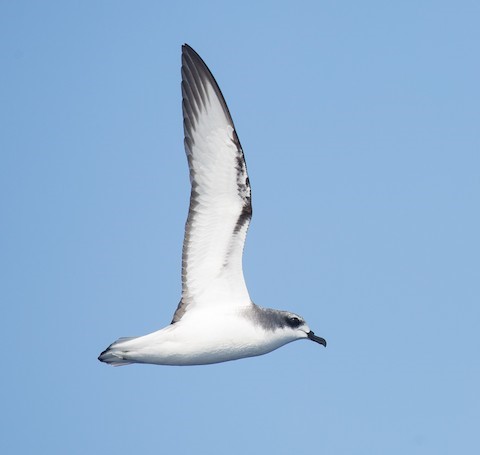
Cook’s Petrel. (Britannia Seamount, offshore from New South Wales, Australia; October 5, 2019.) © Gus Daly

Cook’s Petrel. (Britannia Seamount, offshore from New South Wales, Australia; October 5, 2019.) © Gus Daly
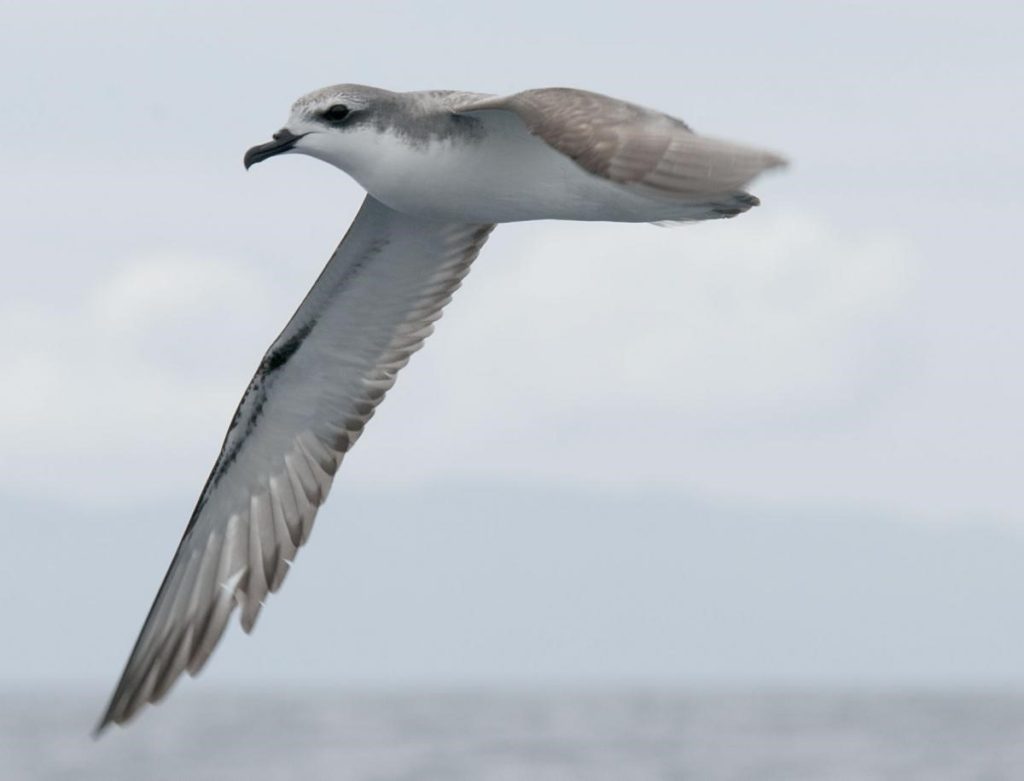
Cook’s Petrel. (Hauraki Gulf, New Zealand; January 2012.) © Philip Griffin

Cook’s Petrel. (Hauraki Gulf, New Zealand; January 14, 2017.) © Hiroyuki & Shoko Tanoi

Cook’s Petrel. (Britannia Seamount, offshore from New South Wales, Australia; October 5, 2019.) © Gus Daly
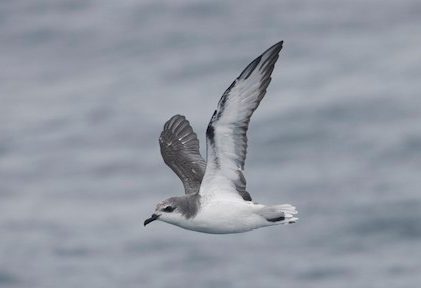
Cook’s Petrel. (Offshore over escarpment between Rodriguez and San Juan Seamount, California; July 25, 2009.) © Brian Sullivan

Cook’s Petrel. (Hauraki Gulf, New Zealand; January 2012.) © Philip Griffin
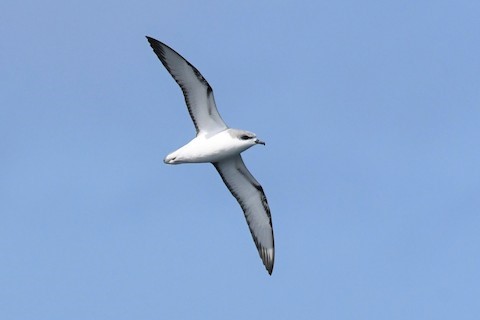
Cook’s Petrel. (Offshore from Eaglehawk Neck, Tasmania, Australia; November 21, 2020.) © Scott Linnane
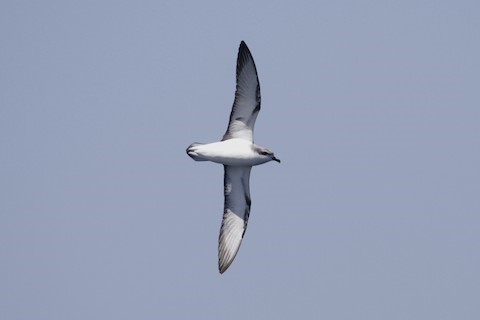
Cook’s Petrel. (Offshore from Eaglehawk Neck, Tasmania, Australia; November 18, 2017.) © Paul Brooks
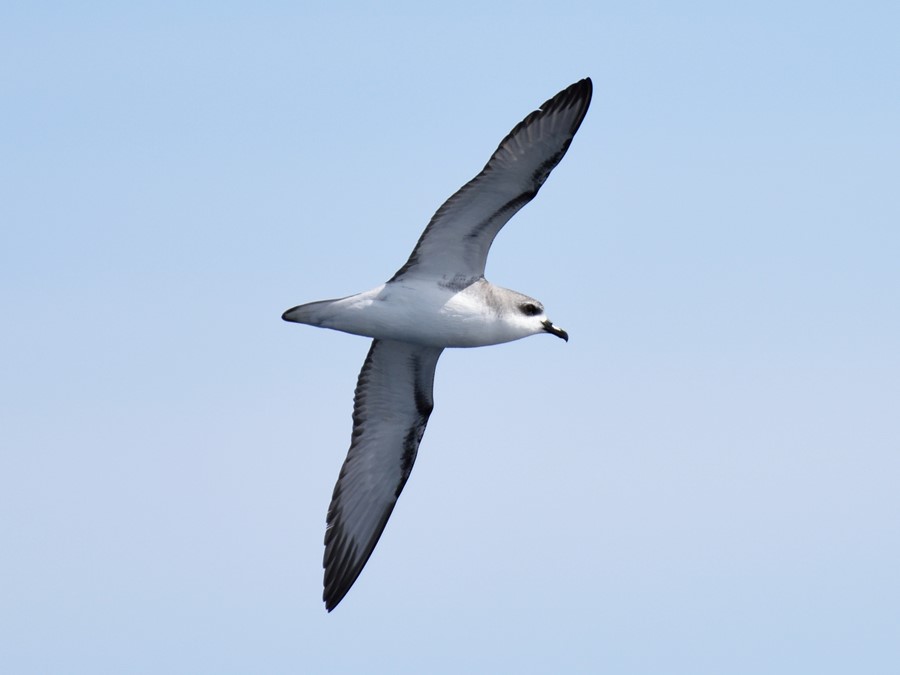
Cook’s Petrel. (Hauraki Gulf, New Zealand; January 14, 2017.) © Hiroyuki & Shoko Tanoi

Cook’s Petrel. (Hauraki Gulf, New Zealand; February 15, 2018.) © Cameron Eckert
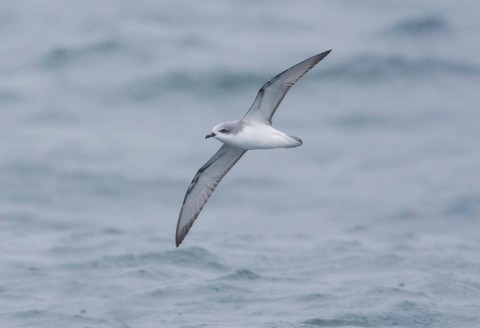
Cook’s Petrel. (Offshore east of Stewart Island, New Zealand; January 4, 2019.) © Koel Ko
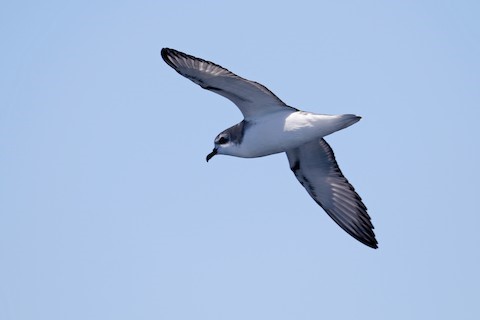
Cook’s Petrel. (Hauraki Gulf, New Zealand; February 15, 2018.) © Cameron Eckert
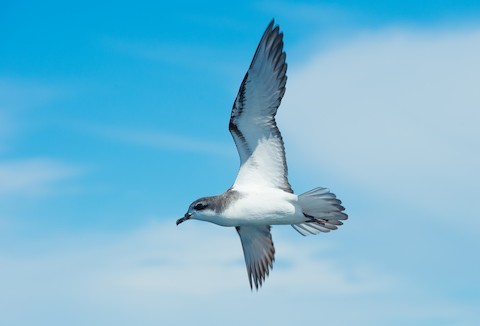
Cook’s Petrel. (Offshore from Houhora, North Island, New Zealand; March 22, 2015.) © Leslie Feasey

Cook’s Petrel. (Hauraki Gulf, New Zealand; November 16, 2019.) © Alex Berryman

Cook’s Petrel. (Hauraki Gulf, New Zealand; January 7, 2018.) © James Moore

Cook’s Petrel. (Hauraki Gulf, New Zealand; October 24, 2018.) © Cathryn Dippo

Cook’s Petrel. (Hauraki Gulf, New Zealand; January 14, 2017.) © Hiroyuki & Shoko Tanoi

Cook’s Petrel. (Kauai, Hawaii; September 2006.) © Jim Denny

Cook’s Petrel. (Codfish Island, New Zealand; December 2011.) © Colin Miskelly

Cook’s Petrel. (Codfish Island, New Zealand; March 2006.) © Graeme Taylor

Cook’s Petrel. (Codfish Island, New Zealand; March 2006.) © Graeme Taylor
Cf. Pycroft’s Petrel. Cook’s and Pycroft’s Petrels occur together over a wide portion of the Pacific Ocean: both breed in New Zealand and disperse north and east from there. They are similar in size and have nearly identical plumages, where differences are generally overwhelmed by the variation within each species and due to feather-wear and lighting.
The biggest difference between them is structural—Pycroft’s is shorter in length and wingspan, and proportionately thicker—but these differences are difficult to observe and evaluate objectively under most field conditions (unless one of each species happen to fly side-by-side at close range).
Another difference that may be easier to observe is the shading and pattern of the head and neck. In this area Cook’s is a paler shade of gray overall, which accentuates the dark shadows around its eyes, and Cook’s usually shows a distinct white brow. Pyrcoft’s’s head and neck are medium-gray overall, usually darker than the back, giving it a cowled appearance. On Pycroft’s, the darker shadow around the eye is not pronounced, and it rarely shows a distinct browline.
Cf. De Filippi’s Petrel. Cook’s and De Filippi’s Petrels occur together seasonally in the Humboldt Current waters west of South America and possibly more widely in the Pacific. They are nearly identical in size, coloration and pattern, including white browlines, but have two fairly consistent differences that are often evident under good viewing conditions. First, De Filippi’s has a thicker bill. There is variation in both species and potential for overlap, but De Filippi’s’ bill is usually thick enough to make an impression. Second, the upperside of De Filippi’s’ tail is all pale-gray, not dark-tipped. Cook’s is somewhat variable in this feature, but usually shows a darker tip.
Cf. Stejneger’s Petrel. Cook’s and Stejneger’s Petrels overlap widely across most of the Pacific Ocean and are easily mistaken for one another. Stejneger’s is slightly smaller in all dimensions, but this would rarely be useful under field conditions. The more helpful differences between them are plumage features: especially the color and pattern of the upperparts. Stejneger’s is darker overall and has a strongly contrasting pattern: a bold, blackish “M” across the wings and back; a blackish tail (both darker and more extensive than on Cook’s). The coloration and pattern of the head and neck also differ. In this area Cook’s is a paler shade of gray overall, which accentuates the dark shadows around its eyes, and Cook’s usually shows a distinct white brow. Stejneger’s usually shows a dark cap and cowl with an extensively white forehead that may reach the eye, but not a pale brow.
Notes
Monotypic species.
IUCN Red List Status: Vulnerable.
References
Alderfer, J., and J.L. Dunn. 2014. National Geographic Complete Birds of North America (Second Edition). National Geographic Society, Washington, D.C.
BirdLife International. 2018. Pterodroma cookii. The IUCN Red List of Threatened Species 2018: e.T22697975A132616449. https://dx.doi.org/10.2305/IUCN.UK.2018-2.RLTS.T22697975A132616449.en. (Accessed January 17, 2021.)
Brooke, M. 2004. Albatrosses and Petrels across the World. Oxford University Press.
eBird. 2021. eBird: An online database of bird distribution and abundance. Cornell Lab of Ornithology, Ithaca, N.Y. http://www.ebird.org. (Accessed January 17, 2021.)
Harrison, P. 1983. Seabirds: An Identification Guide. Houghton Mifflin, Boston.
Howell, S.N.G. 2012. Petrels, Albatrosses & Storm-Petrels of North America. Princeton University Press.
Howell, S.N.G., and K. Zufelt. 2019. Oceanic Birds of the World. Princeton University Press.
Onley, D., and P. Scofield. 2007. Albatrosses, Petrels & Shearwaters of the World. Princeton University Press.
Pratt, H.D., P.L. Bruner, and D.G. Berrett. 1987. A Field Guide to the Birds of Hawaii and the Tropical Pacific. Princeton University Press.
Pyle, R.L., and P. Pyle. 2017. The Birds of the Hawaiian Islands: Occurrence, History, Distribution, and Status. Version 2 (January 1, 2017). http://hbs.bishopmuseum.org/birds/rlp-monograph/. B.P. Bishop Museum, Honolulu, Hawaii.
Taylor, G.A., and M.J. Rayner. 2017. Cook’s petrel. In New Zealand Birds Online (Miskelly, C.M., ed.). http://nzbirdsonline.org.nz/?q=node/170. (Accessed January 17, 2021.)
Seabirding of Japan. 2021. Cook’s Petrel. http://seabirding-japan.com/cooks-petrel-2/. (Accessed January 16, 2021.)
Sibley, D.A. 2000. The Sibley Guide to Birds. Alfred A. Knopf. New York.
Xeno-Canto. 2021. Cook’s Petrel – Pterodroma cookii. https://www.xeno-canto.org/species/Pterodroma-cookii. (Accessed January 17, 2021.)
